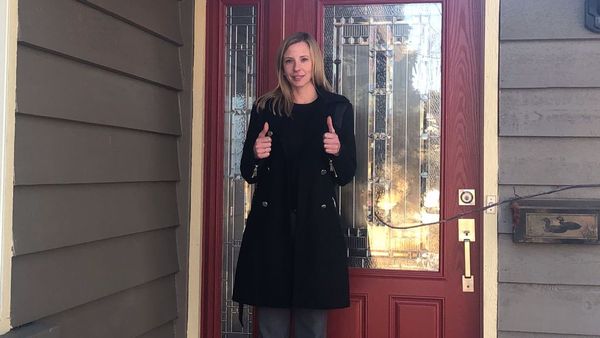Suited Rental Properties in Calgary: Should You Invest in a New Suburb or an Established Community?
Calgary is one of the fastest-growing cities in Canada, fueled by strong population growth, economic resilience, and consistent housing demand. As investors look for smart ways to capitalize on this momentum, suited rental properties—properties with legal secondary suites—have emerged as a standout strategy for both cash flow and long-term appreciation.
But there’s a big decision to make before buying:
Should you invest in a suited home in a new suburb, or focus on one in an older, more established community?
Both options offer advantages and risks. New suburbs are sleek, modern, and growing—but also come with uncertainties. Established neighborhoods offer strong rental demand and solid infrastructure—but they can come with maintenance issues and legal suite challenges.

In this comprehensive post, we’ll explore every angle of the debate:
Cash flow
Tenant demand
Legal suite logistics
Renovation potential
Long-term appreciation
Risk factors
Investor profiles for each option
And at the end, Calgary Real Estate Wealth will show you how to decide which one fits your goals—and how to take the next step toward securing a cash-flowing, equity-building property in the Calgary market.
What Are Suited Rental Properties?
Before we dive into the location debate, let’s clarify what we mean by suited rental properties.
These are homes with a legal or illegal secondary suite—often a basement apartment—with a separate entrance, kitchen, bathroom, and living space. In Calgary, secondary suites are regulated under the Land Use Bylaw, and the city has streamlined the process for legalizing them in many zones.
Why suited homes are popular among investors:
Dual rental income from one property
Mortgage helper for owner-occupiers
Ability to house-hack while building equity
Improved resale value
Greater rental flexibility (rent both units or live in one)
Now, let’s explore the two major location strategies Calgary investors are choosing between.
Option 1: Investing in a Suited Rental Property in a New Calgary Suburb
Popular new communities: Livingston, Carrington, Yorkville, Belvedere, Rangeview, Glacier Ridge, Seton, Legacy
Advantages of New Suburbs
1. Modern, Low-Maintenance Homes
Homes in new developments are typically built to current code and come with warranties, high-efficiency systems, and newer materials. For investors, that means fewer unexpected repairs and lower upfront capital expenditure.
Example: You’re less likely to deal with aging roofs, foundation issues, or outdated plumbing—expenses that often catch landlords off guard in older properties.
2. Purpose-Built Legal Suites
Many new homes are being sold with pre-designed legal secondary suites. This takes the guesswork out of legal compliance, fire separation, parking requirements, and building inspections.
Builders like Shane Homes, Trico, and Broadview offer suited models ready for tenants on possession. You won’t need to apply for permits or retrofit existing space—your suite is fully legal from Day 1.
3. High Tenant Appeal for Professionals and Young Families
Brand-new homes appeal to renters who want modern finishes, clean interiors, energy-efficient appliances, and private entrances. You’ll attract a more discerning tenant pool—often professionals, tech workers, or young families.
This can translate into:
Higher rents
Lower turnover
Better care of the property
4. Long-Term Appreciation Potential
Many new suburbs are planned with long-term growth in mind. As infrastructure, schools, and commercial hubs develop, early investors can benefit from substantial equity gains.
You’re not just buying a rental—you’re buying into a vision of future value.
5. Builder Incentives and Financing Options
Some developers offer:
Down payment assistance
Appliance and landscaping packages
Free suite upgrades
Preferred lender terms
These can help you get into a cash-flowing property with less out-of-pocket investment.
Disadvantages of New Suburbs
1. Rental Demand May Start Slow
New communities often lack transit access, schools, shopping centers, or entertainment options. Tenants may be hesitant to move into an area that isn’t “ready” yet.
This can mean longer vacancy periods and a need to offer slightly lower rents until the neighborhood matures.
2. Longer Commute Times
Most new suburbs are located on the edges of Calgary. Tenants who work downtown or rely on public transit may not find them ideal—especially if the area isn’t well-connected to the LRT or rapid bus systems.
3. Higher Purchase Prices
Modern construction comes at a premium. You will pay $600,000+ for a new suited home, which impacts your cash-on-cash return and overall cash flow—especially with current interest rates.
4. Uncertain Market Growth
While some suburbs thrive and appreciate, others take time to gain traction. If infrastructure or schools are delayed, it can slow value growth and rental demand.
5. Construction Disruption
Your first tenants may live through two or more years of active construction in the area—leading to dust, noise, traffic delays, and an unfinished feel.
6. Increased competition
Developers are building a vast amount of suited homes in new communities. Many of these are very similar and have nothing to differentiate from one another. This leads to a lot of choice for tenants and as more units get built, rental rate decline.
Option 2: Investing in a Suited Rental Property in an Established Calgary Community
Popular established neighborhoods: Thorncliffe, Forest Canyon Meadows, Glamorgan, Bowness, Highland Park, Ogden, Huntington Hills, Mckenzie Towne, Winston Heights
Advantages of Established Communities
1. Proven Rental Demand
Established areas have strong, steady demand due to their proximity to downtown, public transit, hospitals, and schools. You’re not speculating—you’re stepping into a rental market with existing demand.
Many of these neighborhoods offer:
Transit access (LRT, BRT)
Walkable amenities
Diverse tenant pools
Year-round occupancy
2. Higher Cash Flow Potential
While prices in these areas are rising, they’re still often lower than new builds. Combined with solid rents, this leads to:
Stronger cash flow
Better cap rates
Faster return on investment
For example: A home with a legal suite in Bowness might cost $575,000 and generate $4,000/month in rent—leading to positive monthly cash flow even at 4.5% interest.
3. Immediate Amenities
Tenants want access to groceries, schools, clinics, and community centers. Older areas already have mature infrastructure, which improves tenant satisfaction and helps reduce vacancy.
4. Renovation & Value-Add Opportunities
Many suited homes in older communities are underutilized or cosmetically outdated. With targeted renovations, you can:
Increase rent
Improve tenant quality
Boost resale value
Legalize an existing suite
This is a great strategy for hands-on investors looking to force appreciation.
5. Diverse Tenant Base
From students to seniors to working professionals, established communities attract a broader range of tenants—including long-term renters and newcomers to Calgary.
Disadvantages of Established Communities
1. Higher Maintenance and Repair Risk
Old homes often come with old problems:
Outdated electrical panels
Worn-out furnaces
Sewer backups
Asbestos or lead-based paint
You’ll need to budget for maintenance—and possibly do some serious due diligence before buying.
2. Legalization May Be Required
Many secondary suites in older homes are not legal. You’ll need to:
Apply for development/building permits
Install fire separations
Upgrade windows, HVAC, or plumbing
Meet egress and parking requirements
This can cost anywhere from $20,000 to $70,000 depending on the property.
3. Limited Builder Warranties
Unlike new homes, older properties don’t come with coverage or warranties. That means everything from a cracked foundation to a leaking roof is your responsibility.
4. Some Neighbourhoods Have Mixed Reputations
Areas like Forest Lawn or Dover offer great cash flow—but may also come with higher tenant turnover or property management challenges.
It’s essential to vet tenant profiles, check crime maps, and understand the trade-offs in each zone.
Side-by-Side Comparison: New Suburb vs. Established Community
Feature New Suburb Established Community
Purchase Price Higher Lower
Cash Flow Lower initially Higher immediately
Legal Suite Usually pre-approved May need retrofitting
Maintenance Needs Low Medium to high
Tenant Demand Growing Steady
Appreciation Potential Higher (long term) Slower (unless gentrifying)
Transit Access Limited Better
Amenity Access Developing Immediate
Risk Profile Lower repair risk, Higher repair risk,
higher market risk lower market risk
Which Type of Property Is Right for You?
This depends on your investment profile and long-term goals:
Choose a New Suburb If You:
Want lower maintenance and newer systems
Plan to hold long term for appreciation
Prefer passive management
Are okay with modest cash flow for the first few years
Value new construction and warranties
Choose an Established Community If You:
Want strong cash flow and proven rental demand
Can manage or outsource renovations and suite legalization
Have a shorter investment horizon
Are looking for a property with value-add potential
Prefer a walkable, transit-friendly location
The Real Win Is Owning the Right Property for Your Goals
There’s no “one-size-fits-all” answer. The Calgary market offers amazing opportunities in both new and established areas—what matters most is how well the property fits your strategy, budget, and risk tolerance.
As population growth surges and secondary suites gain popularity, suited homes in Calgary will remain one of the most powerful tools in a real estate investor’s playbook.
Ready to Find the Right Suited Property in Calgary?
Whether you're looking for modern, turnkey properties in brand-new suburbs or high-cash-flow investments in mature neighborhoods, Calgary Real Estate Wealth can help you identify the opportunities that match your investment goals.
Book a free strategy session today—we’ll talk through:
Which communities fit your budget and goals
What types of suited homes perform best right now
How to compare ROI, cap rate, and long-term value
What off-market or builder-direct options may be available
Calgary Real Estate Wealth is a full service real estate investment firm that sources, analyzes & negotiates premium investment properties for its investors since 2006. Calgary Real Estate Wealth offers mentorship on all aspects of real estate investing investing through bi-weekly webinars, blogs, podcasts, books & its You tube channel, CREW TV. Calgary Real Estate Wealth also offers, through it's leasing division, CREW Property Services, tenant placement services, ongoing leasing services, and property maintenance and renovations for each property purchased. Real estate investing has never been so easy!
Posted by Calgary Real Estate Wealth on

Leave A Comment